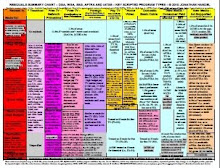Great news – my new book, “Hollywood on Strike!: An Industry at War in the Internet Age” will be out in just a few weeks. The book chronicles the 2007-2009 Hollywood labor disturbances – the WGA strike and the SAG stalemate – and tries to make sense of them.
The book will be available on Amazon, and I’ll have a link on the blog as soon as it’s available for purchase. (Media and bloggers can send request review copies at jhandel at att dot net.)
Meanwhile, here’s a sneak peek at the cover:
And the copy from the back cover:
It was a Hollywood meltdown ...
The Writers Guild went on strike in 2007. The big issue: fees for programs released on new media such as the Internet. The strike was settled one hundred turbulent days later – but then the Screen Actors Guild spiraled out of control, unwilling to accept the same terms but unable to muster a second strike. As the national economy collapsed, idled writers and actors sacrificed millions of dollars in film and TV wages in order to pursue pennies in new media. All told, the turmoil lasted about two years.
But why? Analyzing events as they unfolded, Los Angeles entertainment attorney and journalist Jonathan Handel lays bare the contracts, economics and politics swirling behind the paradox of Hollywood labor relations. Handel is a uniquely qualified guide: a former associate counsel at the Writers Guild, his law practice at TroyGould focuses on new media and entertainment. He was described as “one of the most-quoted sources on the strike,” and recently taught a course on entertainment unions and guilds as an adjunct professor at UCLA School of Law. Handel covers entertainment labor as a Contributing Editor for The Hollywood Reporter and his writing also appears on Forbes.com and the Huffington Post. As a commentator, Handel has appeared in the media hundreds of times.
The 2007-2009 contracts, so hard fought, brought scant months of labor peace: renegotiations began in 2010, and recur every three years. That makes this book, and the author’s blog at jhandel.com, essential reading for anyone who wants to understand Hollywood in the digital age.
The book is partially based on my blog, but it is edited and revised, and is supplemented with material describing events not covered in the blog, and with a host of reference material as well. It’s a big book – about 477 pages of text plus another hundred pages of reference material. Here’s the Table of Contents:
Acknowledgments
About the Author
Roadmap
Highlights – Milestones and Analysis
Introduction
Background: Is Content Worthless?
Prologue
Epigraph
Chapter 1 Run Up to a Breakdown
Chapter 2 Strike!
Chapter 3 Dark Days
Chapter 4 The Writers Fight and the DGA Makes a Deal
Chapter 5 Approaching a Writers Deal
Chapter 6 The WGA Makes a Deal
Chapter 7 The Actors Take Center Stage
Chapter 8 SAG Talks Collapse and AFTRA Makes a Deal
Chapter 9 The SAG Contract Expires
Chapter 10 Stalemate
Chapter 11 On Hold for the SAG Elections
Chapter 12 Run Up to a Second Strike?
Chapter 13 Up Next: Strike Authorization?
Chapter 14 Authorization Interruptus
Chapter 15 The NED Gets Fired
Chapter 16 Negotiations Again
Chapter 17 Let's Take a Commercial Break
Chapter 18 A SAG Deal at Last
Conclusion
Postscript: Reforming Residuals
Dramatis Personae
Abbreviations/Glossary
Detailed Table of Contents
Reference Calendar
Graphic Timeline
Index
Finally, here’s a description of each section of the book:
The Introduction briefly describes the writers strike and SAG stalemate and sets out the main questions of this book: why did these events occur and what brought them to a conclusion?
The section entitled Background: Is Content Worthless? provides perspective on the central challenge facing the entertainment industry today: how to thrive in a world where technology – particularly the Internet – is driving down the apparent value of the industry’s product. That challenge is intertwined with the concerns about new media that drove the writers strikes and SAG stalemate.
The Prologue sets the stage for the book by offering a theory as to how technological change causes entertainment industry strikes.
The Epigraph provides a sense of theme to the book.
Chapters 1-6 chronicle the writers strike and Chapters 7-18 the SAG stalemate. Each chapter in the book is made up of a number of articles, each of which focuses on a particular date, event, or issue. The coverage is day by day and week by week as events warranted. If you’d like a more abbreviated read, see the Highlights – Milestones and Analysis for a list of selected articles.
The Conclusion, naturally enough, attempts to draw conclusions from the events the book describes.
The Postscript: Reforming Residuals suggests a way to reform the residuals system in order to reduce the likelihood of future Hollywood labor disturbances.
Dramatis Personae is a list of the key people who figure in the events discussed in the book.
The Abbreviations/Glossary section is a chart that defines abbreviations and important terms.
The Detailed Table of Contents includes dates and article titles, in addition to chapter titles, whereas the Table of Contents at the front of the book only includes chapter titles.
The Reference Calendar is a blank calendar encompassing the 26 months covered in the book.
The Timeline is a detailed timeline in graphic form depicting the events covered in the book. It includes cross references to pages in the main text.
In addition to what you’d expect to find in an index, this book’s Index also includes the titles of articles in this book, a number of important years before or after 2007-2009 (e.g., “1971”), and residuals formulas (e.g., “1.2% of gross”).
If you’re searching for something from 2007-2009 by date, you can look it up in the Detailed Table of Contents and/or in the Timeline. Or, if you know the article title you’re interested in, look it up alphabetically in the Index or chronologically in the Detailed Table of Contents.


